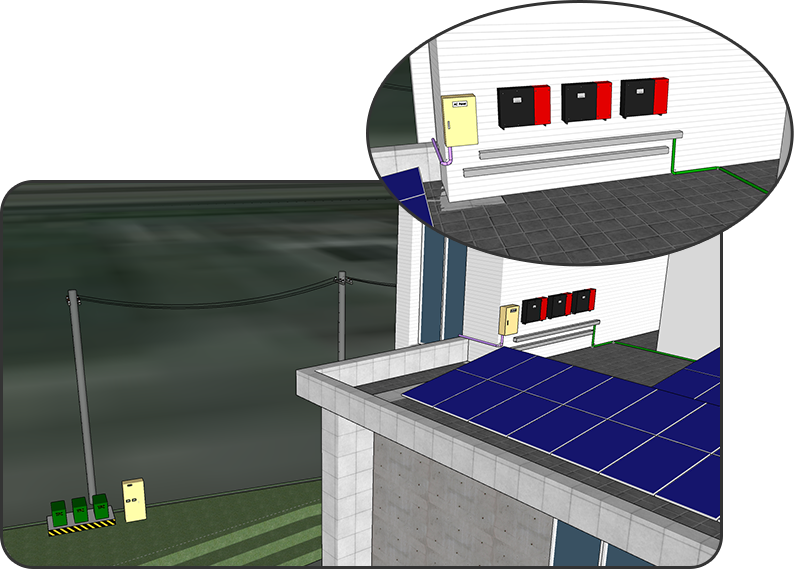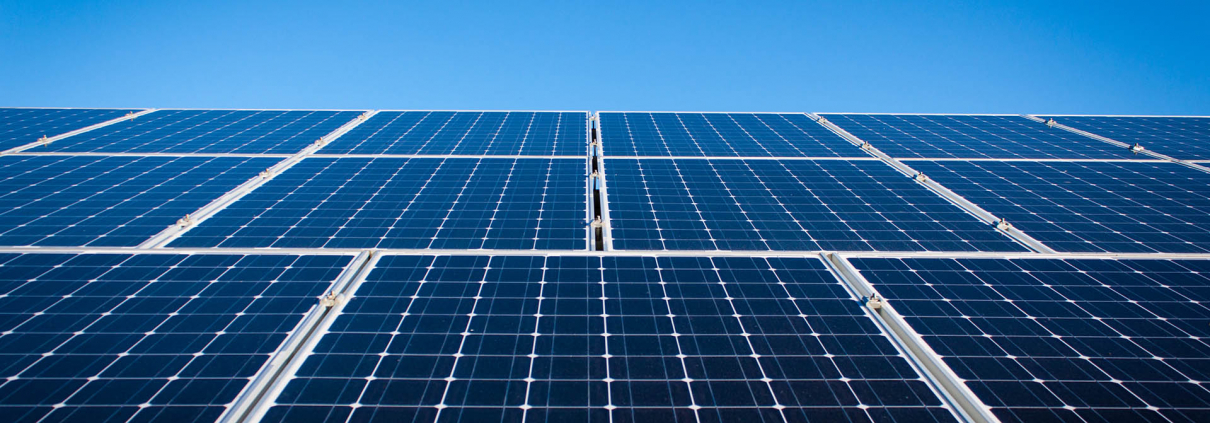Taiwan, located at a low latitude, is blessed with abundant natural resources. As the sunlight continuously shines, it is no longer just a source of intense heat. But solar panels now capture this energy, transforming it for future generations.
With the evolving new energy policies, the development of renewable energy is advancing. Setup Engineering will use sustainable and rich resource to develop high-safety power generation, from evaluation and design to completion, ensuring you stay at the forefront of the green energy movement.

Solar Panels
A solar panel, or solar cell, is a device composed of arrays of silicon wafers that converts light into electrical current through the photoelectric effect. The semiconductor materials currently used for power generation mainly include: monocrystalline silicon, polycrystalline silicon, amorphous silicon, and cadmium telluride, etc..
Direct Current Circuit
Solar panels emit DC current, just like batteries used in daily life, with positive and negative ends. The DC circuit is composed of multiple solar panels connected in series, allowing the series to maintain a high voltage and low loss state, and then enters through multiple circuits in parallel to next device "inverter".
Inverters
Also known as a "DC to AC Converter," the inverter, as the name suggests, converts the direct current (DC) generated by the solar panels into alternating current (AC) that we use daily. Through the inverter's self-regulating capability, it not only achieves effective maximum power point tracking (MPPT), but also ensures stable power supply and transmission when connected to the grid.
Alternating Current Circuit
The electricity converted by the inverter is so-called "alternating current" (AC). Through the AC circuit, the electricity is progressively connected to Taiwan Power Company's power system, supplying electric power to each green energy user.
Electrical Meter Boxes
Every kilowatt-hour (kWh) of green electricity generated by the system is recorded by the meter inside this meter box. The revenue from power generation is also calculated based on the readings from the meter.
Power Grid
The network system established by Taiwan Power Company supplies daily electricity needs in Taiwan.
- Solar Panels
A solar panel, or solar cell, is a device composed of arrays of silicon wafers that converts light into electrical current through the photoelectric effect. The semiconductor materials currently used for power generation mainly include: monocrystalline silicon, polycrystalline silicon, amorphous silicon, and cadmium telluride, etc.. - Direct Current Circuit
Solar panels emit DC current, just like batteries used in daily life, with positive and negative ends. The DC circuit is composed of multiple solar panels connected in series, allowing the series to maintain a high voltage and low loss state, and then enters through multiple circuits in parallel to next device "inverter". - Inverters
Also known as a "DC to AC Converter," the inverter, as the name suggests, converts the direct current (DC) generated by the solar panels into alternating current (AC) that we use daily. Through the inverter's self-regulating capability, it not only achieves effective maximum power point tracking (MPPT), but also ensures stable power supply and transmission when connected to the grid. - Alternating Current Circuit
The electricity converted by the inverter is so-called "alternating current" (AC). Through the AC circuit, the electricity is progressively connected to Taiwan Power Company's power system, supplying electric power to each green energy user. - Electrical Meter Boxes
Every kilowatt-hour (kWh) of green electricity generated by the system is recorded by the meter inside this meter box. The revenue from power generation is also calculated based on the readings from the meter. - Power Grid
The network system established by Taiwan Power Company supplies daily electricity needs in Taiwan.

